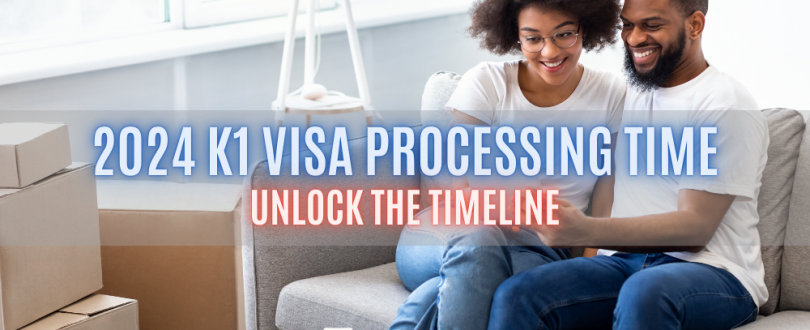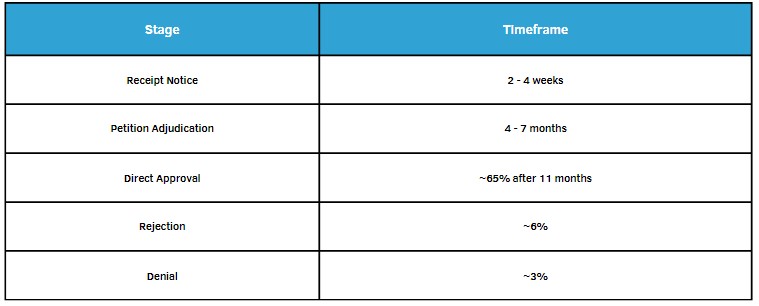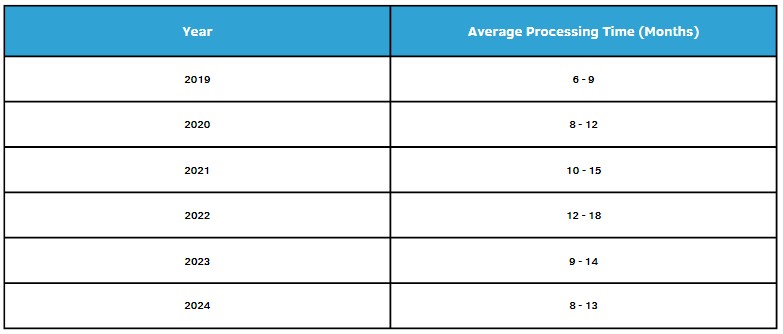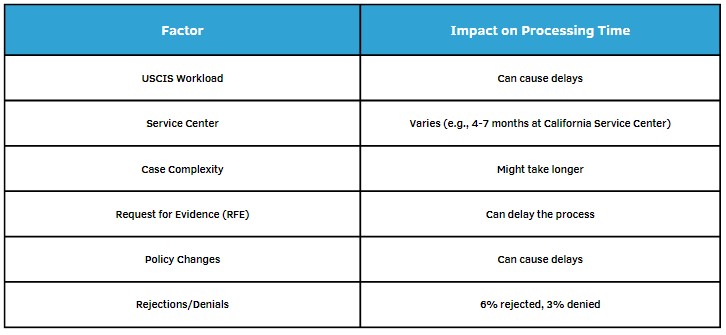
Getting Through the K-1 Visa Process
The K-1 visa process can feel like a maze. Let’s break it down so you know what to expect and how to handle it.
What’s a K-1 Visa Anyway?
The K-1 visa, or fiancé(e) visa, lets a U.S. citizen bring their foreign fiancé(e) to the U.S. to get married. Here’s the lowdown on the steps involved:
1. Filing Form I-129F: The U.S. citizen starts by filing Form I-129F, Petition for Alien Fiancé(e), with the United States Citizenship and Immigration Services (USCIS).
2. USCIS Processing: USCIS checks out the petition. They might ask for more info, known as a Request for Evidence (RFE).
3. National Visa Center (NVC) Processing: Once USCIS gives the thumbs-up, the petition goes to the NVC, which then sends it to the right U.S. embassy or consulate.
4. Consular Processing: The foreign fiancé(e) has an interview at the U.S. embassy or consulate. If all goes well, they get the K-1 visa and can head to the U.S.
5. Marriage and Adjustment of Status: The couple must tie the knot within 90 days of the fiancé(e)’s arrival. After that, the foreign spouse can apply for a Green Card.

What Can Slow Things Down?
Several things can mess with the timeline for getting a K-1 visa:
1. USCIS Workload: How busy USCIS is can affect how long things take. Lots of applications or policy changes can slow things down. Right now, USCIS is processing cases at a steady rate, so things should even out by 2024.
2. Service Center: Different service centers have different speeds. For example, the California Service Center is taking about 4 to 7 months in 2024.
3. Case Complexity: Some cases are just trickier than others. If your case needs extra evidence or has special circumstances, it might take longer.
4. Requests for Evidence (RFE): About 18% of cases get an RFE, which can slow things down. Make sure to respond quickly and accurately to avoid more delays.
5. Policy Changes: Changes in immigration rules can also affect processing times. USCIS sped things up in early 2023, but things slowed down again by mid-2024.
6. Rejections and Denials: Around 6% of I-129F applications get rejected because of mistakes, and 3% are outright denied.
Knowing what can slow things down helps you prepare better and manage your expectations.
USCIS Processing Stage
I-129F Petition Adjudication
Getting your Form I-129F, Petition for Alien Fiancé(e), approved is the first big step in the K-1 visa process. Right now, it takes about 4 to 7 months at the California Service Center in 2024. After you file, you’ll get a confirmation notice in 2 to 4 weeks. This notice has a 10-digit receipt number you can use to check your case status online.

Request for Evidence (RFE)
If your initial petition is missing some documents or raises questions, USCIS might send you a Request for Evidence (RFE). About 18% of I-129F applications get an RFE. Once you send in the extra evidence, USCIS usually takes a few weeks to decide.

Make sure to respond to an RFE quickly and thoroughly to avoid more delays. If USCIS is happy with the new evidence, your petition gets approved. If not, it might get denied.
National Visa Center (NVC) Stage
So, your I-129F petition got the green light from USCIS? Awesome! Now, it’s time to move on to the next step: the National Visa Center (NVC). This part is super important to keep things rolling smoothly for your K-1 visa application.
NVC Processing Time
Once USCIS gives the thumbs-up, the NVC jumps in. They usually take about 2 to 3 months to process everything. During this time, they’ll give your case a number and check all your paperwork to make sure it’s good to go. After that, they’ll send your case over to the right U.S. Embassy or consulate.

Transition to U.S. Department of State
After the NVC does its thing, your case heads to the U.S. Department of State. This can take another 4 to 6 weeks. During this time, the NVC will hit you up with the next steps for your fiancé’s visa application and interview prep. You’ll get all the details on what forms you need, which documents to gather, and how to schedule the consular interview.

Knowing these timelines and what’s needed at the NVC stage helps keep things on track for your K-1 visa application.
Consular Processing
Once the National Visa Center (NVC) wraps up its part in the K-1 visa process, the case heads over to the U.S. Embassy or Consulate for consular processing. This stage has two big steps: scheduling the interview and getting the visa.
Interview Scheduling
Scheduling the interview is a crucial part of the K-1 visa application. After the NVC sends the case to the U.S. Embassy or Consulate, the sponsored fiancé(e) will get a notification for the interview. Typically, the wait for this interview is about a month.
During this time, the applicant needs to gather the necessary documents, which usually include:
– Passport
– Birth certificate
– Police certificates from current and previous residences
– Medical examination results
– Proof of the relationship (photos, correspondence, etc.)
– Affidavit of support
The interview is generally scheduled around 4 to 8 weeks after submitting the required documents to the embassy.

Visa Issuance
After the interview, if the consular officer is happy with the application and the evidence provided, the K-1 visa is usually issued within a couple of weeks. During the interview, the applicant must show the genuine nature of their relationship and their plan to marry within 90 days of entering the United States.

Getting the K-1 visa is the last step before the fiancé(e) can travel to the United States. To avoid any delays during this phase, it’s vital to have all documents and evidence well-prepared and presented.
By understanding the consular processing stage, applicants can better manage their expectations and timelines, making the journey toward reuniting with their loved one in the United States smoother.
K-1 Visa Application Timeline
From Filing to USCIS Approval
Getting a K-1 visa starts with filing Form I-129F, the Petition for Alien Fiancé(e). The timeline can vary based on how fast the service center processes your petition and how complete your application is.

About 65% of cases get approved after waiting around 11 months. Some applications might get a Request for Evidence (RFE), asking for more documents. Around 18% of cases get approved after sending in this extra info, while about 8% get denied.
Consular Processing and Interview
Once USCIS gives the green light on the I-129F petition, the case moves to the National Visa Center (NVC) and then to the U.S. consulate or embassy in the applicant’s country for more processing.

At the consulate or embassy, the applicant will have an interview. This part, including the interview and visa issuance, usually takes 3 to 5 months.

The whole process can take about 10 to 16 months, from filing Form I-129F to getting the K-1 visa. Delays can happen due to incomplete applications, missing documents, or extra background checks.
COVID-19 Impact on Processing
The COVID-19 pandemic has thrown a wrench into the K-1 visa processing timeline. Delays have become the new normal with reduced staffing and new health protocols.
Delays and Changes
Thanks to the pandemic, K-1 visa processing has hit some serious speed bumps. USCIS and consulates are working with fewer staff and have had to change how they operate. Temporary closures or limited operations at embassies and consulates have also stretched out the wait times.

In 2024, some updates are trying to speed things up, like digital processing improvements and better support systems for applicants. These changes might help, but keep an eye out for new updates.
Safety Measures and Travel Restrictions
New health and safety measures are in place to keep everyone safe. These include mandatory quarantines and extra health checks. While necessary, these steps have added to the delays.
Travel restrictions have also made it tough for applicants to attend interviews and complete in-person requirements. These restrictions change often and vary by country, adding another layer of complexity to the K-1 visa process.

Applicants should keep checking the official USCIS and U.S. Department of State websites for the latest updates.


